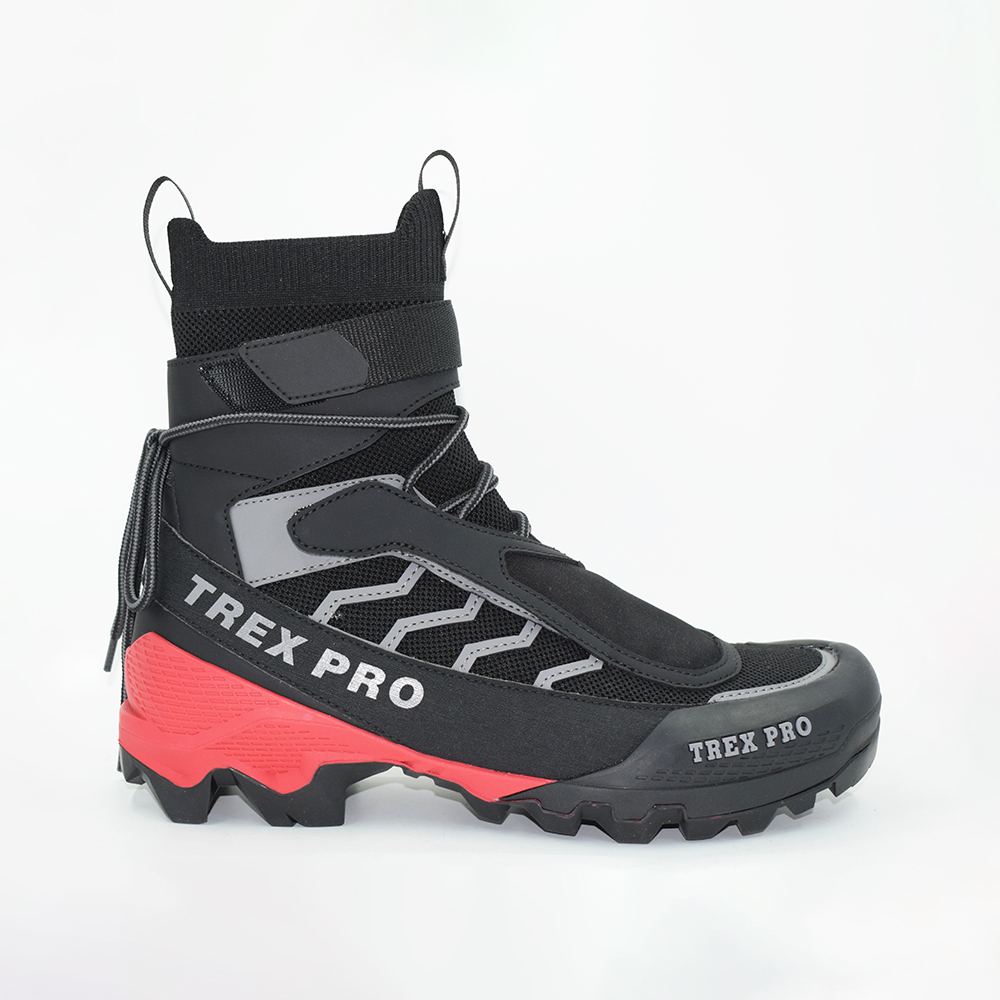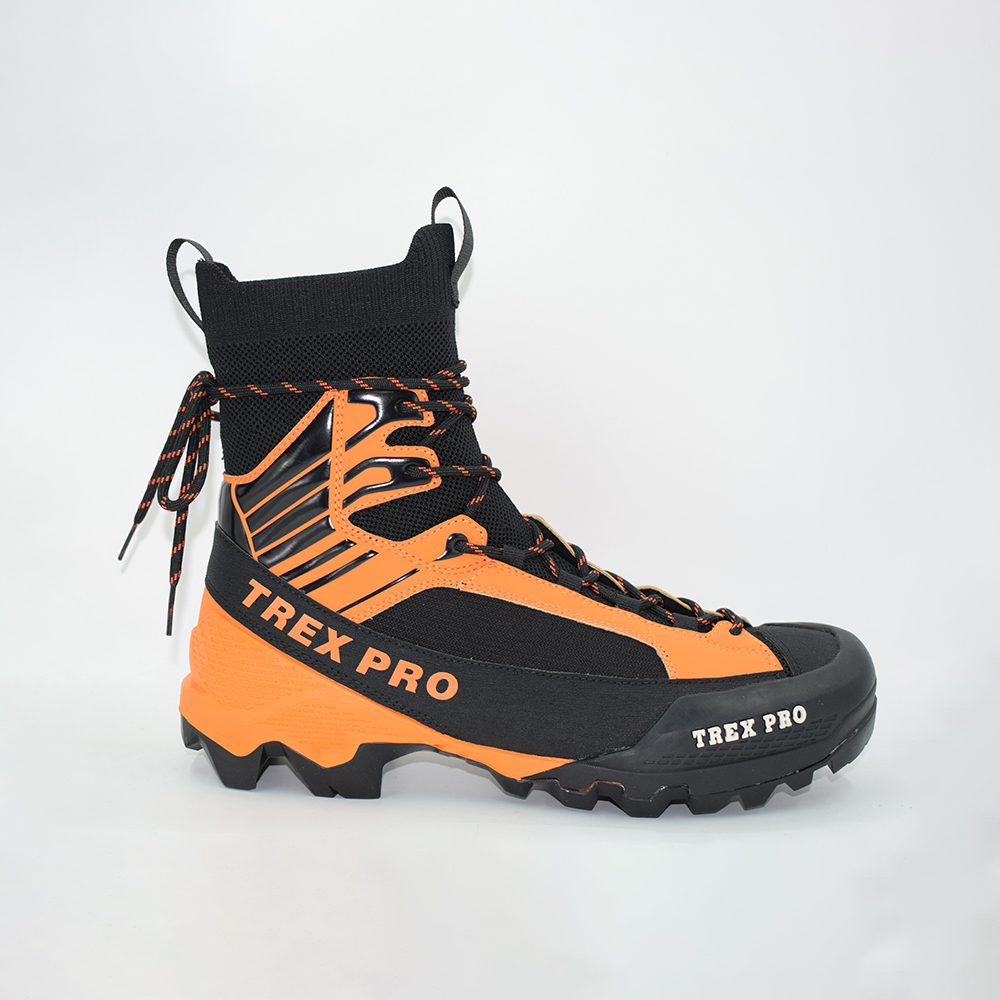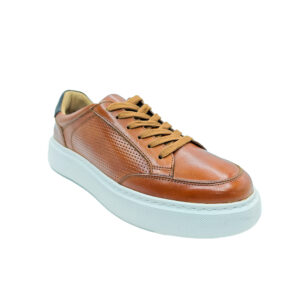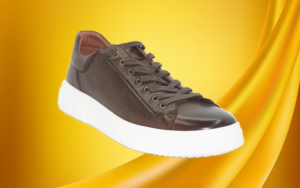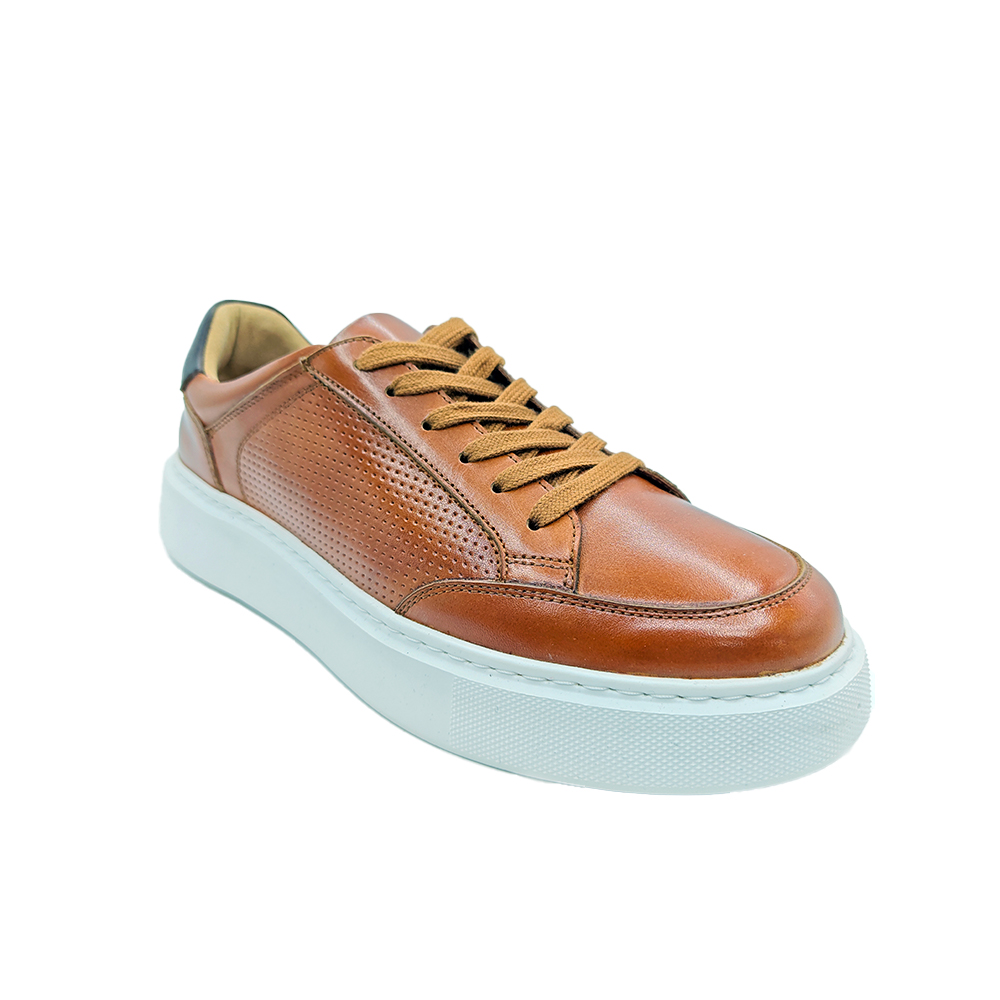For outdoor enthusiasts, the difference between a confident stride and a perilous slip often lies in the soles of their hiking shoes. The outsole—the foundation of traction, durability, and safety—is the unsung hero of every hiking adventure. As a manufacturer specializing in custom hiking shoes, we engineer outsoles to conquer diverse terrains, from rain-slicked rocks to loose gravel. This guide explores the science behind outsole materials, compares leading technologies, and equips you to choose the perfect grip for your next expedition.
1. Types of Outsole Materials for Hiking Shoes
Outsoles are crafted from specialized rubber compounds, each optimized for specific conditions. Below are the most common types:
1.1 Carbon Rubber (Vibram® Megagrip)
- Composition: A blend of natural rubber, carbon black, and silica.
- Key Features:
- Durability: Resists abrasion from sharp rocks and rough trails.
- Grip: Excellent on wet and dry surfaces (friction coefficient: 0.8–1.0).
- Weight: Heavier (avg. 500g per pair), ideal for rugged terrain.
- Best For: Multi-day backpacking, scree slopes, and technical trails.
1.2 Sticky Rubber (Vibram® Idrogrip, Stealth Rubber)
- Composition: High-silica compounds with sticky additives like butyl rubber.
- Key Features:
- Wet Rock Adhesion: Friction coefficient up to 1.2 on slimy surfaces.
- Flexibility: Softer for precise foot placement on climbs.
- Trade-offs: Wears faster than carbon rubber.
- Best For: Via Ferrata, canyoneering, and waterfall hikes.
1.3 Eco-Friendly Rubber (Contagrip® Eco)
- Composition: Recycled rubber (30–50%) blended with virgin compounds.
- Key Features:
- Sustainability: Reduces landfill waste without sacrificing grip.
- Performance: Matches traditional rubber on moderate trails.
- Best For: Eco-conscious hikers on maintained paths.
1.4 Thermoplastic Polyurethane (TPU)
- Composition: Durable polymer injected with grip-enhancing additives.
- Key Features:
- Oil Resistance: Ideal for muddy or industrial environments.
- Stiffness: Provides stability under heavy loads.
- Best For: Approach shoes and urban hiking.
2. Comparing Outsole Materials for Hiking Shoes
To choose the right outsole, weigh these factors:
| Material | Durability (1–5) | Wet Grip (1–5) | Weight (1–5) | Eco-Friendliness | Best Terrain |
|---|---|---|---|---|---|
| Carbon Rubber | 5 | 4 | 3 (Heavier) | Low | Rocky, uneven trails |
| Sticky Rubber | 3 | 5 | 4 (Medium) | Medium | Wet rocks, vertical climbs |
| Eco-Friendly Rubber | 4 | 3 | 4 (Medium) | High | Gravel paths, dry forests |
| TPU | 4 | 2 | 2 (Light) | Medium | Muddy trails, urban hikes |
3. Tread Patterns: The Hidden Hero of Hiking Shoes
An outsole’s grip isn’t just about material—its tread design plays a pivotal role.
3.1 Lug Depth and Shape
- Deep Lugs (4–6mm): Channel mud and snow away (e.g., Vibram® Arctic Grip).
- Multi-Directional Lugs: Provide grip during ascents, descents, and side traverses.
- Chevron Lugs: Self-clean quickly on muddy trails.
3.2 Groove Configuration
- Water Channels: Wide grooves expel water to prevent hydroplaning.
- Siping: Micro-cuts in the rubber flex to enhance grip on icy surfaces.
4. How to Choose the Right Outsole for Your Hiking Shoes
Follow this step-by guide to match outsoles to your needs:
4.1 Assess Your Terrain
- Rocky Mountains: Carbon rubber with deep, multi-directional lugs.
- Rainforests: Sticky rubber with water channels and antimicrobial treatments.
- Deserts: TPU outsoles with heat-resistant compounds.
4.2 Consider Load and Distance
- Lightweight Hikes: Eco-friendly rubber or TPU for agility.
- Heavy Backpacking: Carbon rubber for durability under 40+ lb loads.
4.3 Climate Compatibility
- Cold Weather: Look for winter-specific compounds like Vibram® Arctic Grip.
- Wet Environments: Prioritize high-silica sticky rubber.
4.4 Test Flexibility
Bend the outsole in-store—stiff soles offer stability, while flexible ones enhance tactile feedback.
5. Case Studies: Custom Outsoles in Action
5.1 The Pacific Crest Trail (PCT)
A thru-hiker needed shoes to handle 2,650 miles of mixed terrain. Our solution:
- Outsole: Vibram® Megagrip with self-cleaning chevron lugs.
- Result: Zero sole replacements over 5 months.
5.2 Icelandic Glacier Trek
- Challenge: Ice, wet rocks, and sub-zero temps.
- Solution: Sticky rubber with tungsten carbide spikes for hybrid crampon compatibility.
-
Rated 0 out of 5
-
Rated 0 out of 5
-
Rated 0 out of 5
-
Rated 0 out of 5
6. Maintaining Your Hiking Shoes’ Outsoles
Extend outsole life with these tips:
6.1 Cleaning After Hikes
- Remove debris with a stiff brush.
- Avoid harsh detergents that degrade rubber.
6.2 Storage Tips
- Keep hiking shoes in a cool, dry place to prevent rubber oxidation.
- Use shoe trees to maintain tread shape.
6.3 Resoling Options
When lugs wear down to 2mm, resole with:
- Original Material: For consistent performance.
- Upgraded Rubber: Swap to sticky rubber for technical terrain.
7. The Future of Outsole Materials in Hiking Shoes
Innovations on the horizon:
7.1 Bio-Inspired Designs
- Gecko-Tech: Micro-suction pads mimicking gecko feet for vertical adhesion.
- 3D-Printed Outsoles: Custom treads based on gait analysis.
7.2 Self-Healing Rubber
- Microcapsule Tech: Releases healing agents to seal cracks.
7.3 Smart Outsoles
- Pressure Sensors: Alert hikers to uneven weight distribution.
Step Confidently with the Right Outsole
The perfect pair of hiking shoes begins from the ground up. By understanding outsole materials, tread designs, and terrain demands, you can customize footwear that grips like a second skin. As a bespoke manufacturer, we’re here to engineer hiking shoes that turn treacherous trails into triumphs.

